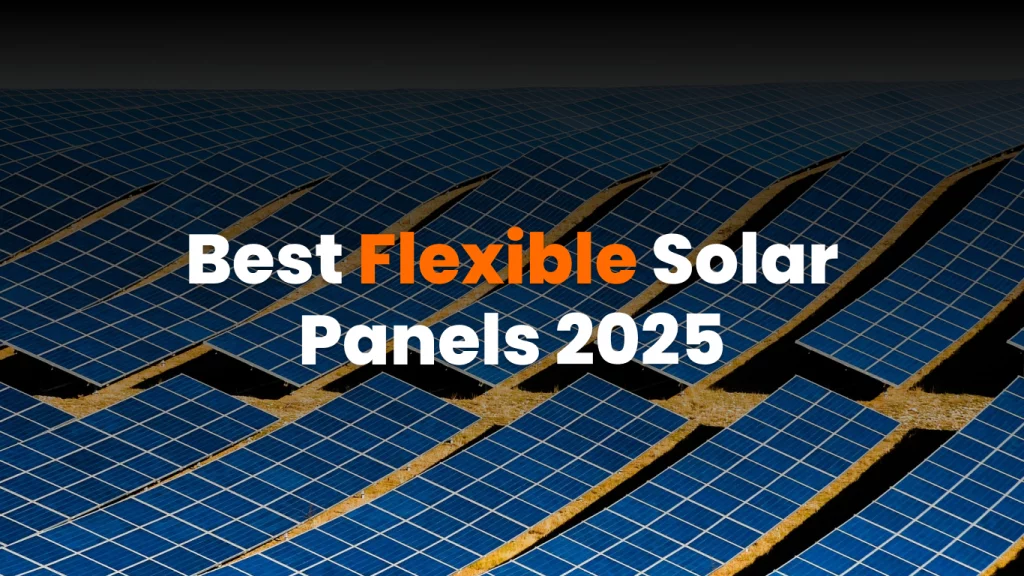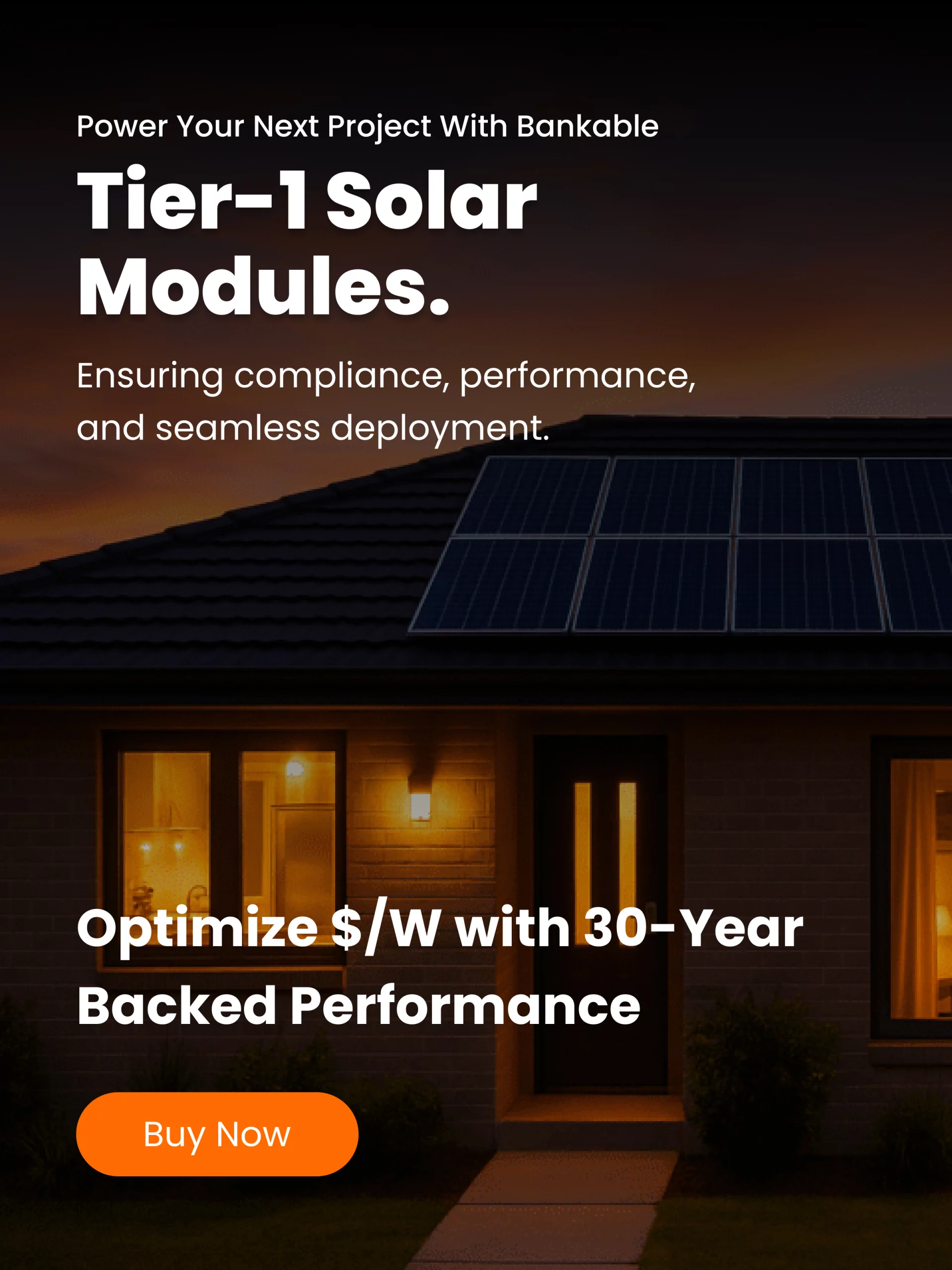If you’re living on the move, boating, RVing, or just camping off grid, flexible solar panels are incredibly appealing. Their light weight, low profile, and ease of installation make them perfect for mobile lives. But with so many options out there, how do you find the best ones? In this review, we’ll break down how flexible panels work, what makes them different from rigid panels, and highlight some of the top models for 2025.
What are flexible solar panels?
Flexible solar panels, also called thin-film or bendable solar panels, use photovoltaic materials applied to flexible substrates like thin metal, plastic, or even fabric. Unlike traditional rigid panels, they can bend to varying degrees (some up to 360°), making them ideal for uneven surfaces like curved RV roofs, boats, tents, or backpacks.
Because they’re lighter and thinner, flexible panels are easier to carry, mount, and hide. That flexibility comes at a cost, though: generally lower efficiency and shorter lifespans compared to rigid monocrystalline panels. Still, for mobile or seasonal applications, the tradeoff is often worthwhile.
What to look for when choosing flexible solar panels
When searching for a good flexible panel, here are key factors to keep in mind:
Weight and thickness
One of the biggest perks of flexible panels is portability. A good unit should weigh significantly less than rigid panels of similar wattage. For example, the Renogy 100 W flexible panel weighs just about 4.2 lbs, making it easy to handle and mount.
Bending radius
How much the panel can flex without damage is important. Panels that bend to 248° or more are more forgiving on curved surfaces, while others can go up to 360° full bend. This flexibility affects how and where you can install them.
Durability and weather resistance
Look for features like waterproof junction boxes, reinforced backing, and UV-resistant coatings, especially for marine or outdoor use. Some models can handle high snow loads, strong winds, or saltwater exposure, which matters if you’re traveling in harsh conditions.
Efficiency and power output
Flexible panels are less efficient than their rigid counterparts, typically 10–15% vs. 20%+ for premium monocrystalline panels. If space is tight or sunlight is limited, you might need more flexible surface area to get the same energy yield as rigid panels. Some models, like higher-end ones from Renogy, deliver robust wattages despite their flexible nature.
Warranty and lifespan
Because flexible panels generally degrade faster, warranties tend to be shorter. Expect 3–5 years for manufacturing defects, and 10–15 years for performance guarantees. Always check the fine print and look for power retention warranties (e.g., “80% output after 10 years”).
Price and value
Flexible panels often cost more per watt than comparable rigid ones. But when portability, weight, and versatility are priorities, they can offer excellent value. Comparing cost per watt, considering weight and mounting costs, helps evaluate whether they’re the best choice for your setup.
Top flexible solar panel picks for 2025
Based on expert reviews and real-world performance, here are some of the standout flexible panels that hit a sweet spot for quality, durability, and portability:
Renogy 100 W flexible panel
This is a favorite among RV users and boaters. At just ~4.2 lbs, it’s about 70% lighter than rigid panels in the same range. Despite its thin profile, it offers reliable power production and handles mild bends well. Users consistently praise its power-to-weight ratio and ease of installation.
Renogy 200 W flexible panel
If you need more output without sacrificing flexibility, the 200W model is a strong contender. It maintains much of the build quality of smaller units, works well in curved installations, and has weather-resistant features like a waterproof junction box and high wind and snow resistance.
Other notable options
Beyond Renogy, panels from brands like BougeRV (with 360° flexibility), Newpowa (with back-contact cell design), and several marine-rated thin-film options provide great alternatives. A1 SolarStore highlights several models that excel in durability, ease of mounting, and energy output under variable sunlight conditions.
Flexible vs. rigid: which is better?
Here’s a quick breakdown to help you decide whether flexible panels are right for you:
| Factor | Flexible panels | Rigid panels |
| Flexibility & portability | High | Low |
| Weight | Very lightweight | Heavier |
| Mounting ease | Adhesive, silicone, removable mounts | Require racking, tilt mounts |
| Durability | Generally lower | More durable, longer lifespan |
| Efficiency | Lower (10–15%) | Higher (20%+) |
| Cost per watt | Higher | Often lower |
| Ideal use cases | RVs, boats, portable power, curved surfaces | Fixed rooftops, residential, long-term installs |
If your priority is ease of deployment, flexibility, and portability, with minimal permanent installation, flexible panels often win. But if you have a fixed rooftop and want maximum lifetime performance and efficiency, rigid panels might be the better choice.
How to get the most from flexible solar panels
If you decide that flexible panels are the right choice for your setup, here are some tips to maximize their effectiveness and lifespan:
- Optimize orientation and tilt
While flexible panels are designed for curved surfaces, angling them toward direct sunlight still matters. Use a slight tilt or adjustable ground mount when parked to capture more sun. - Keep them clean
Dirt, dust, salt spray, and tree sap can significantly reduce output. Clean panels regularly with fresh water and a soft cloth or brush, especially in marine environments. - Watch your wiring and connectors
Flexible panels often come with thin wires and small connectors. Ensure all connections are weatherproof and secure, ideally with marine-rated heat shrink or silicone sealant. - Monitor output and temperature
Flexible panels can heat up more than rigid ones, which may reduce efficiency under high temperatures. A monitoring system or app can help you track energy production and temperature behavior. - Store carefully when traveling
If you plan to remove panels while driving, roll or fold them gently and store them in protective sleeves or bags. Avoid sharp bends or creases that could damage cells over time. - Plan for future upgrades
If possible, leave spare wiring capacity or mounting space. Many users expand their systems over time, and preparing ahead can save hassle later.
Final thoughts
Flexible solar panels aren’t perfect, but for many mobile and remote applications, they’re a smart and practical choice. Their low weight, ease of installation, and adaptability make them a go-to solution for RVers, boaters, campers, and off-grid travelers.
Whether you’re new to solar power or refining your setup, understanding the tradeoffs, flexibility and convenience versus efficiency and longevity, helps you choose the right gear for your adventures. As of 2025, the flexible panel market has matured. If you pick a quality product, mount it thoughtfully, and maintain it well, flexible solar panels can deliver reliable performance for years to come.




